As soon as the Smithsonian Faculty Fellowship cohort arrived at the Donald W. Reynolds Center…
When I last visited the National Museum of African American History and Culture, I started in the lowest level of the History Galleries and gradually made my way through “Slavery and Freedom 1400 – 1877”; “Defending Freedom, Defining Freedom: The Era of Segregation 1876 – 1968”; and “A Changing America: 1968 and Beyond.” When I ultimately discovered the Contemplative Court, I soon realized how much I needed space to unpack the fraught, often devastating emotional experience of those concourse floors. Professor Serena Gould, who intentionally revisited these floors last week, puts the transformative experience into words: “I did this [walk through the History Galleries] alone last Thursday as a contemplative engagement with my thought process. It is so visceral—the thought of human beings kidnapped, owned and traded like possessions.”
On previous visits, due to emotional and even physical exhaustion, I have limited my stay at NMAAHC, failing to explore anything more than the Culture Galleries. My incomplete experience of the museum is just one of many reasons why I welcomed the opportunity to accompany the Smithsonian Faculty Fellows on Thursday, April 25.
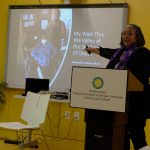
We were fortunate to have such a wonderful guide on the side in Kelly Elaine Navies, a sixth-generation educator who, in her role as a Museum Specialist in oral history, has presented her work to the SFF four times now. Through Navies and her presentation “The Power of Storytelling: Voices of Resistance, Hope, and Resilience,” we learned about NMAAHC’s mission to document oral history. Navies and her team draw on stories to facilitate healing and awareness, and their projects span multiple endeavors, including the Civil Rights History Project, Collection Donor Oral History Project, Edisto Slave Cabin Interviews, Jones-Hall-Sims House Project, Poor People’s Campaign Oral History Project, Reckoning: Visual Arts Oral History Project, and Social Justice Conversations Oral History Project. The final project, in fact, is tied to an Oral History Internship at NMAAHC that introduces selected interns to professional oral history work in a museum setting. Through the internship, young activist scholars are introduced to elder activist scholars to promote intergenerational connection and collaboration. Navies herself often mentors the interns, helping them navigate best practices in conducting interviews. In addition to establishing connection, building trust, asking open-ended questions, and more, Navies even invites interns to send “Thank You” notes post-interview.
Navies’ evident skills as an interviewer are easy to spy in her oral history interviews, many of which are available through the NMAAHC website. During her presentation, we watched a clip from her interview of Edward Theodore Taylor. Taylor, a Korean War Veteran, donated a photo of himself as a 19-year-old soldier to the museum and participated in the Collection Donor Oral History Project. In his interview, he shares a story from 1953, when, having just returned from war, he boarded a Greyhound bus and was soon told, “You can’t sit there, boy.” At the time, Taylor had not occupied a segregated space for two years, and he was so discouraged by the interaction that he promptly left the bus. Later in her presentation, Navies explained how, despite the potential limitations of memory in collecting oral histories, what we gain from these stories is not just content but also the tone of the delivery, the emotionality of the experience(s) shared, and the preserved specifics that stay with the storyteller even years later. Taylor’s interview encapsulates these opportunities so markedly. As he describes throwing his Army medallions into the Chesapeake Bay, an indelible image in and of itself, viewers will hear the tremor in his voice, recognize the residual anger, appreciate the meaningful pauses, and be transported in reverie. It’s amazing to recognize this is but one clip from only one example of NMAAHC’s oral history mission.
Another story Navies shared centered on Bisa Butler’s I Go To Prepare A Place For You, a quilted portrait of Harriet Tubman stitched together with symbolic meaning. Inspired by the youngest known photograph of Tubman, Butler arranged a kaleidoscope of color, texture, and pattern to capture the abolitionist’s mission and story. In Butler’s portrait, the two shades that define her face speak to Tubman’s quiet beauty and stillness as well as the force of her personality. Little details, such as the birds scattered across her dress, underline the liberty she brought to freed men and women. And, the sunflower—a plant known for tilting its head to follow the arc of the sun—acts as a subtle nod to Tubman’s internal compass.
Between listening to oral history or losing ourselves in Butler’s artwork, we were treated to a veritable feast of content, and Navies was generous with her time, first allowing us to pepper her with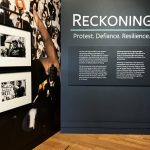 questions about her work and then later escorting us through Reckoning: Protest. Defiance. Resilience. Many of our questions zeroed in on the policies and procedures relevant to collecting oral histories. What is the methodology for data collection? What essential techniques are employed prior to, during, and after an interview? Is oral history fallible when compared to other strategies for documenting the past? Does the identity of the interviewer impact the outcomes of the interview? How does the NMAAHC oral history team find people to interview? This last question spurred a rich response that highlighted the vast network of oral history projects being conducted around the country and within local historical societies. For Navies and her team, though, they must contend with realities like funding and travel while also considering the relative uniqueness of the interviewee, their potential connection to a museum artifact or exhibit, and even the interviewee’s age.
questions about her work and then later escorting us through Reckoning: Protest. Defiance. Resilience. Many of our questions zeroed in on the policies and procedures relevant to collecting oral histories. What is the methodology for data collection? What essential techniques are employed prior to, during, and after an interview? Is oral history fallible when compared to other strategies for documenting the past? Does the identity of the interviewer impact the outcomes of the interview? How does the NMAAHC oral history team find people to interview? This last question spurred a rich response that highlighted the vast network of oral history projects being conducted around the country and within local historical societies. For Navies and her team, though, they must contend with realities like funding and travel while also considering the relative uniqueness of the interviewee, their potential connection to a museum artifact or exhibit, and even the interviewee’s age.
This line of inquiry was particularly thought-provoking for Professor Evan Crump. He shares, “Hearing Dr. Elaine talk about how they prioritize age considerations in who they interview got me thinking about all the conversations I wish I’d had with my parents and grandparents and will now never get the chance to; the stories from WWII, Vietnam, rural Texas, my own early childhood; the memories of people, events, and places now lost to time. I have no larger goal, as oral historians do, to preserve specific historical events, but I still reflect on the staggering loss of collective memory and wisdom every time someone close to me passes.”
As we began our exploration of Reckoning with Navies, many of us started to scatter, lost in our respective thoughts. Despite being pulled in different directions, we were all captivated by the artworks off and on display. Amy Sherald’s Breonna Taylor, may be on view at the Speed Art Museum in Louisville, Kentucky, but its ethos permeates the exhibit and its many artworks, including Rashaun Rucker’s Psychological Redlining (13 Studies) and Bisa Butler’s aforementioned piece. Professor Ted Shusterman and a few other fellows listened on as a staff member introduced the portrait to two young girls. Shusterman shares, “The lady spoke with reverence and awe as she detailed what was known about Tubman and her accomplishments. It was amazing to witness this information being transmitted to a younger generation. I teared up when I saw this.”
Eventually, our time together came to a close, but most fellows continued to explore the National Museum of African American History and Culture’s various exhibits, including Power of Place, Afrofuturism, and Musical Crossroads, just to name a few.
Professor Melissa McCeney visited the Power of Place exhibit. She shares, “I specifically wanted to see the section on the Tulsa riot. I grew up in Oklahoma. Every student who goes through the Oklahoma public school system completes a unit on Oklahoma history in the 4th grade and an entire semester course on Oklahoma history in the 9th grade. Despite both of those educational activities, I never learned of the Tulsa riot until after I had moved to Maryland and checked out a Toni Morrison novel from the library. And that’s exactly why museums like The National Museum of African American History and Culture are so important.”
Professor Ellen Olmstead, as well as several other fellows, visited the Afrofuturism exhibit, a temporary show that leaves in August. Olmstead explains, “I saw some figures I expected, but the way the museum expanded its definition of afrofuturism was fascinating. As you walked into the gallery, it unfolded in different dimensions, which complemented the theme. Very out of space like, with the figures and objects floating in that space even though they were in glass cases. It caught me off guard that the exhibit started in Africa, and then looked at the work of early black writers in colonial America. But that was an excellent challenge to my thinking about afrofuturism, where I was looking ahead instead of looking back.”
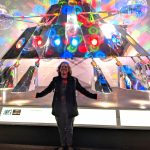 Finally, Professor Ted Shusterman spent potentially the most time of all the fellows at the museum, perhaps because he is confident Musical Crossroads is essential to his Smithsonian Faculty Fellowship project in the fall. He reveals, “Musical Crossroads is a treasure trove of artefacts that showcase the accomplishments and contributions of African American music. My favorite artefact is the replica of the Parliament Funkadelic Mothership, used by George Clinton on the Mothership Connection tour, as well as bassist Bootsy Collins’ Space Bass.” Shusterman was also in awe of the interactives, including The Neighborhood Record Store and another that he describes as a “Digital Audio Workstation.” The latter interactive centers “around the music production process, where two people have to work together as a ‘producer’ and ‘mix engineer’ team to craft a hit song.”
Finally, Professor Ted Shusterman spent potentially the most time of all the fellows at the museum, perhaps because he is confident Musical Crossroads is essential to his Smithsonian Faculty Fellowship project in the fall. He reveals, “Musical Crossroads is a treasure trove of artefacts that showcase the accomplishments and contributions of African American music. My favorite artefact is the replica of the Parliament Funkadelic Mothership, used by George Clinton on the Mothership Connection tour, as well as bassist Bootsy Collins’ Space Bass.” Shusterman was also in awe of the interactives, including The Neighborhood Record Store and another that he describes as a “Digital Audio Workstation.” The latter interactive centers “around the music production process, where two people have to work together as a ‘producer’ and ‘mix engineer’ team to craft a hit song.”
Collaborative spirit, whether through exhibit design, artifact collection, or history documentation, is a prominent theme of NMAAHC’s collective efforts, and I’m certain the Smithsonian Faculty Fellows will cultivate rewarding ways to share this work with their students.
To learn more about our visit, please explore Philippa Rappoport’s Smithsonian Learning Lab collection, which serves as the fellows’ introduction to the National Museum of African American History and Culture: https://learninglab.si.edu/collections/2024-smithsonian-montgomery-college-faculty-fellowship-program-national-museum-of-african-american-history-and-culture/UtK571aGST4nuzL0.
Photos by Denise Dewhurst
Photos by Matt Decker


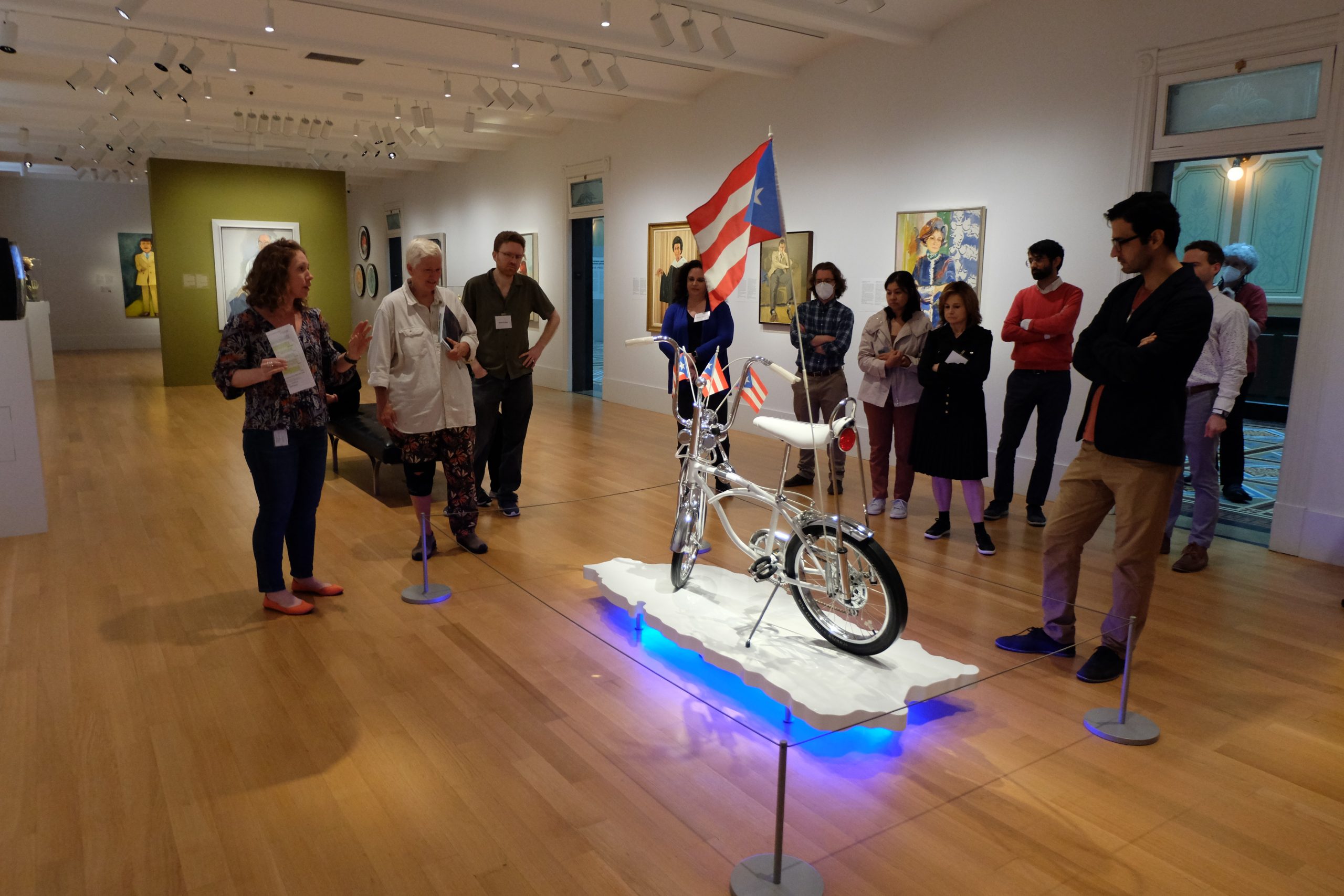

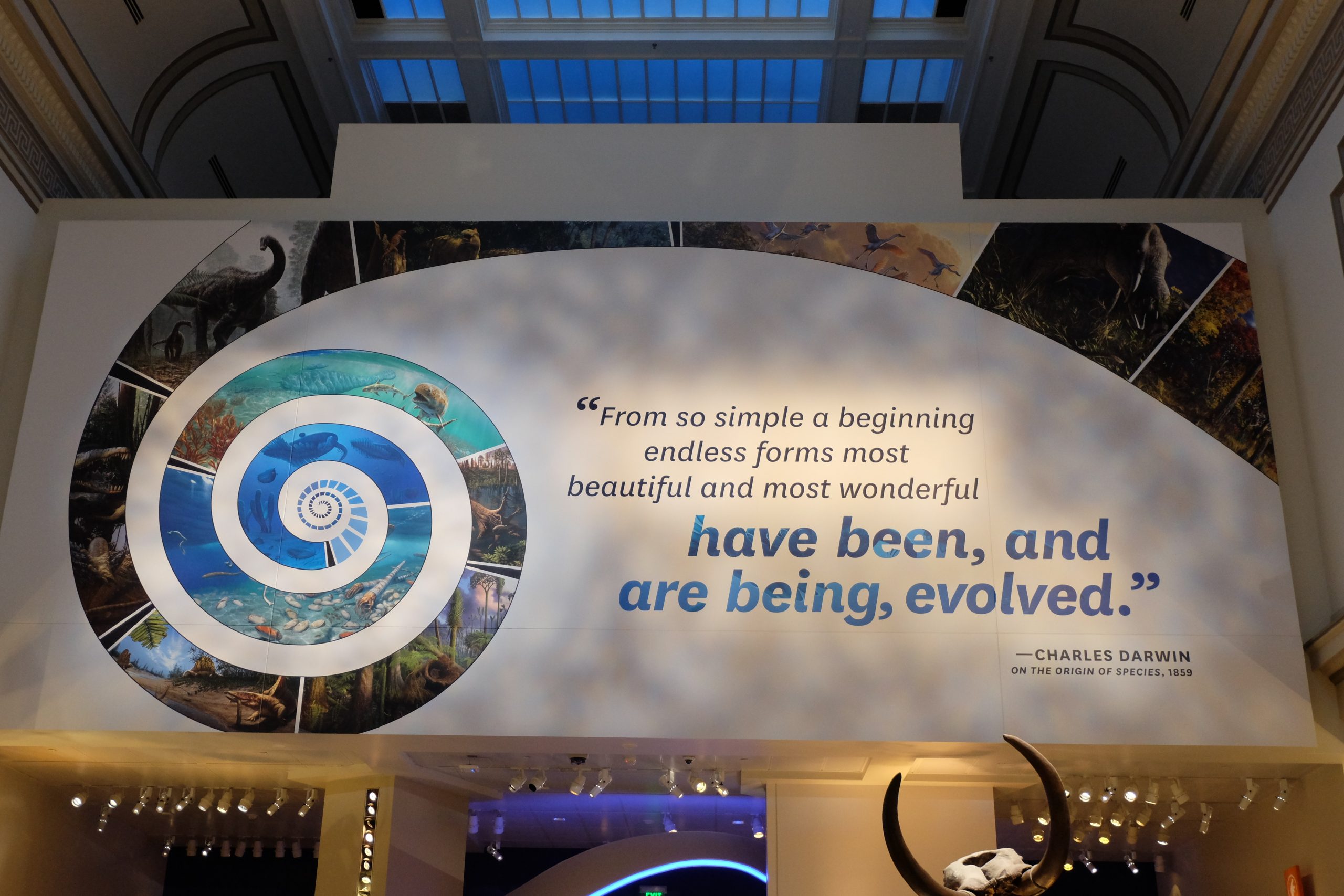
This Post Has 0 Comments